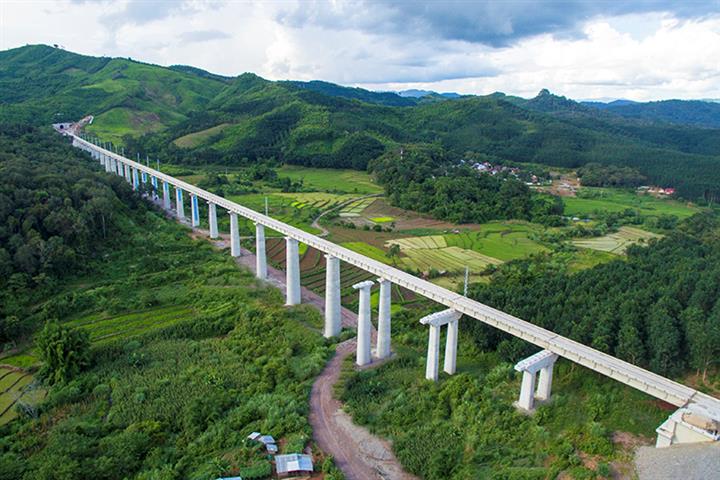 The Latest BRI 'Alternative' Won't Work, Here's Why
The Latest BRI 'Alternative' Won't Work, Here's Why(Yicai Global) July 8 -- At the G7 meeting, the United States took the lead in announcing the “Partnership for Global Infrastructure and Investment” (PGII), pledging with the other countries to invest up to USD600 billion in infrastructure for developing countries before the year 2027 with a goal of rivaling China’s Belt and Road initiative (BRI). The announcement was an effective relaunch of what was previously described as “Build Back Better” (BW3) in 2021, which made similar promises. In a fact sheet readout, the White House claimed that it would coordinate private sector funding and grants in order to achieve its goals, which more so reflected US foreign policy priorities in the form of supply chains, 5G, the internet, and “national security” than any tangible needs of countries in the global south.
This highly ambitious project will, like its predecessor, get nowhere.
US President Joe Biden said that the US aims to mobilize USD200 billion for the PGII project through grants, federal funds and private investment to support projects. But how can the United States Congress be expected to spend hundreds of billions of dollars, even tens of billions of dollars, on global infrastructure, when President Joe Biden’s infrastructure plan under his administration’s ‘Build Back Better Framework’ is still stuck in the legislative chamber
Democratic senators such as Joe Manchin, who are reluctant to invest even a penny in a crumbling highway in Texas or an airport in Ohio, certainly would not agree to fund a dam in Laos, a road in Cambodia, a bridge in Ethiopia, or a power grid in Bolivia.
The G7’s USD600 billion plan will also take five years to realize. In the meantime, Biden faces an unusually tough re-election challenge. And Europe, which is facing growing energy and inflation problems, will lean toward fiscal austerity over an expansion of investment.
Meanwhile, Belt and Road initiative, in which 125 countries and 29 international organizations inked 173 cooperation agreements, expects to create a vast network of six global economic corridors.
What makes the BRI so unique, on this element, is the BRI successfully bypasses the political “strings” attached which frequently come with western based financing, of which demand certain standards and political changes in order to move ahead. President Biden has barely made such conditions a secret, having announced the PGII will focus on “gender equality” on a recent twitter post (also making it highly questionable how much this project actually focuses on tangible infrastructure itself). Such a premise means already the US faces obstacles throughout the Islamic world and other global south countries, of which reminds us that the BRI exceeds because China guarantees the premise of non-intervention and respect for national sovereignty whilst investing. The west does not, and have clearly launched such an initiative as part of a blatant ideological crusade which both underestimates and dismisses how the BRI merges into China’s longstanding solidarity with other developing countries. Whilst China proposes global development, the US and its allies have no other premise but to simply oppose China.
And all this of course means the PGII does not, and cannot have the same strategic designs or long-term economic planning which the BRI offers. China proposes the Belt and Road initiative as a comprehensive plan for global development which interconnects regions through establishing infrastructure and works on creating a number of proposed “economic corridors”. Whilst these projects benefit the countries in question, the BRI is also designed to help reinforce China’s long term economic future beyond low-end manufacturing, as well as reducing its geostrategic vulnerabilities (such as for example, the use of CPEC to bypass the Indian subcontinent and the strait of Malacca).
Whilst the US and its allies are proposing infrastructure projects, it is purely for the means to counter-China and does not attempt to replicate the same vision for “connectivity” which the BRI strives to achieve between regions, meaning it is not a vision for the global economy or regional integration at all, leaving it with less purposes, less appeal and less logic than the BRI. Like Build Back Better, this project is unlikely to ever live up to its goals or premise, and even if it did, it would only pale in comparison to what the BRI strives to achieve. This is not a blueprint for global development and global south solidarity, it is an ideological and reactionary drive and will be at best: patchy.